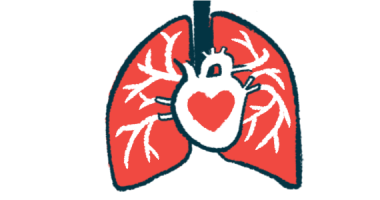Vericiguat improved heart function in man with Fabry disease: Report
Medicine is approved for chronic heart failure, reduced ejection fraction

A 69-year-old man diagnosed with Fabry disease who developed heart failure, high pulmonary arterial pressure, and heart microcirculation dysfunction saw his symptoms ease after treatment with vericiguat, according to a case reported in China.
Vericiguat, which is sold as Verquvo, is an oral medicine that’s approved in the U.S. and other countries for adults with chronic heart failure and reduced ejection fraction, which is the amount of blood the heart pumps out to the body in each beat. It’s a guanylate cyclase stimulator that relaxes blood vessels to improve heart function.
The case was reported in “Vericiguat improves cardiac function and microcirculation of a male patient with Fabry disease: A case report” in the Annals of Noninvasive Electrocardiology. According to the researchers, “[Fabry disease] patients with confirmed coronary microvascular dysfunction might benefit from treatment with vericiguat.”
Fabry disease is caused by mutations in the GLA gene, which provides instructions to produce the alpha-galactosidase A (alpha-Gal A) enzyme that’s responsible for breaking down fatty molecules inside lysosomes, the cell’s recycling centers. This results in fatty molecules, mainly globotriaosylceramide (Gb3) and lyso-Gb3, accumulating in small blood vessels and body tissues, causing organ damage.
The disease is commonly associated with heart problems, including an irregular heartbeat, enlargement of the ventricles, or heart failure. Several studies have investigated using different therapeutic approaches to treat heart conditions in Fabry patients, but “no attempts have been made to improve microvascular [dysfunction] in patients with [Fabry disease],” the researchers wrote. Microvascular dysfunction occurs when the small blood vessels that supply the heart muscles aren’t working properly.
Treating Fabry-related heart problems
Here, researchers in China write about a man with Fabry disease and heart failure with reduced ejection fraction (HFrEF) and microvascular dysfunction, whose symptoms eased after treatment with vericiguat. In HFrEF, there is high left ventricular pressure and a reduced amount of blood pumped to the body in each beat.
The man had a previous diagnosis of intermittent episodes of irregular heartbeat, thickened interventricular septum, that being the muscular wall that divides the heart’s ventricles, mildly reduced left ventricle ejection fraction, and high pulmonary arterial pressure.
In this episode, the patient felt slightly exhausted after lifting heavy weights and an evaluation at a local hospital revealed a deteriorating heart condition, with an increase in pulmonary arterial pressure.
He was referred to the researchers’ cardiology department at a hospital in Tianjin, where enlargement of the upper heart chambers and a worsening of left ventricle ejection fraction were observed. The man was prescribed several medications for heart failure, but the pulmonary arterial pressure continued to worsen. He also had a severe impairment in the microvascular blood supply to the heart and a genetic analysis revealed a mutation in the GLA gene (Met72Thr), which was possibly linked to Fabry disease.
His levels of alpha-Gal A activity were low (0.48 vs. reference range 2.2-17.65) and lysoGB3 levels were slightly above normal (1.22 vs. reference range of less than 1.11). He was diagnosed with Fabry disease based on these results. Researchers believed he might benefit from vericiguat, which he started at a 5 mg daily dose.
His condition improved after three months, with his left ventricular ejection fraction increasing to a value considered normal and pulmonary arterial pressure decreasing. The man’s microvascular circulation also improved.
According to the researchers, “the improvement in microvascular perfusion, possibly through treatment with vericiguat, might be one of the reasons for the decrease in [pulmonary arterial pressure] and the increase in [left ventricular ejection fraction].”
“For [Fabry disease] patients with cardiac dysfunction, quantitative myocardial blood perfusion … should be conducted at an early phase to detect disturbances in microcirculation,” they said.







